Was it once hip to be a square?
the unstylish corniness of middlebrow 90s rock
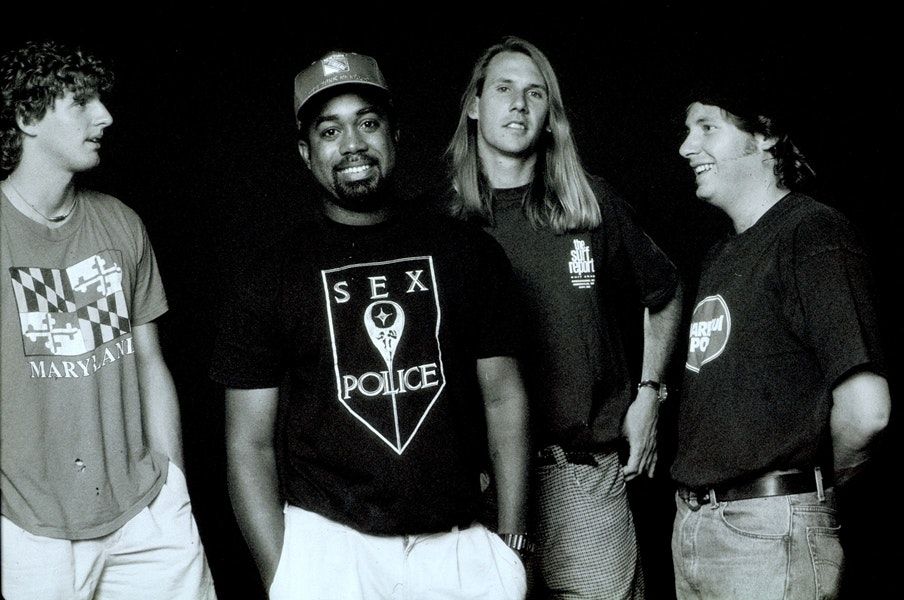
This week I watched Todd in the Shadows’ excellent new video on the brief but intense popularity of Hootie & the Blowfish. I have no intention of trying to understand the public’s love of Hootie; I have accepted it as one of those mysteries of the 90s that I will never understand, like Bill Murray playing a romantic lead or Destiny’s Child never recording a version of “Independent Women, Pt. 1” with the Charlie’s Angels references removed. But in learning about Hootie, I did fixate on another, more specific question: what the fuck were those nerds wearing?
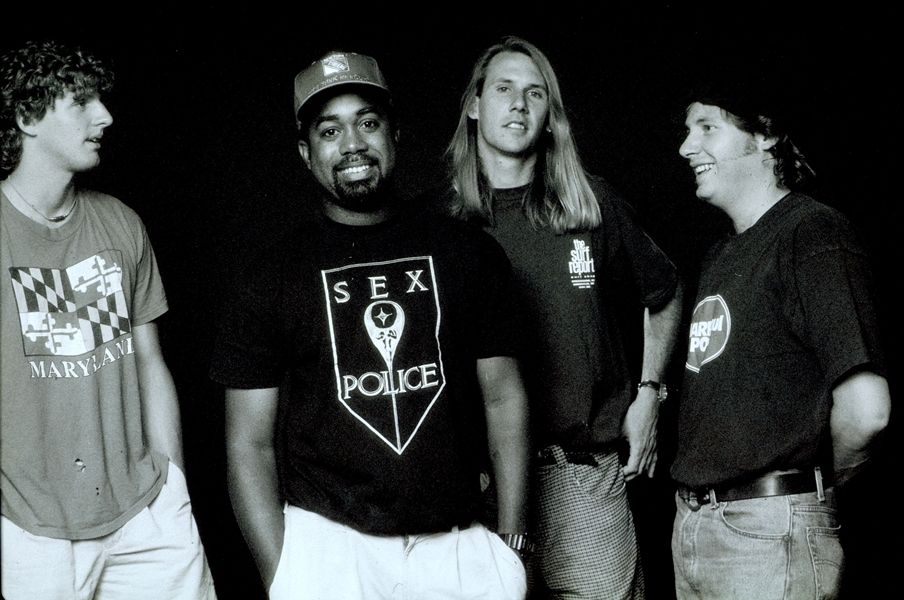
I was particularly confused by a clip of them accepting a Grammy (presented by Tupac Shakur and the band KISS, and we don’t have time to get into that, as I have already stated that the 90s are a confusing decade that I will never understand). One of the Blowfish wears high-waisted, billowy khakis, while Hootie himself is wearing a golf polo and baseball cap.
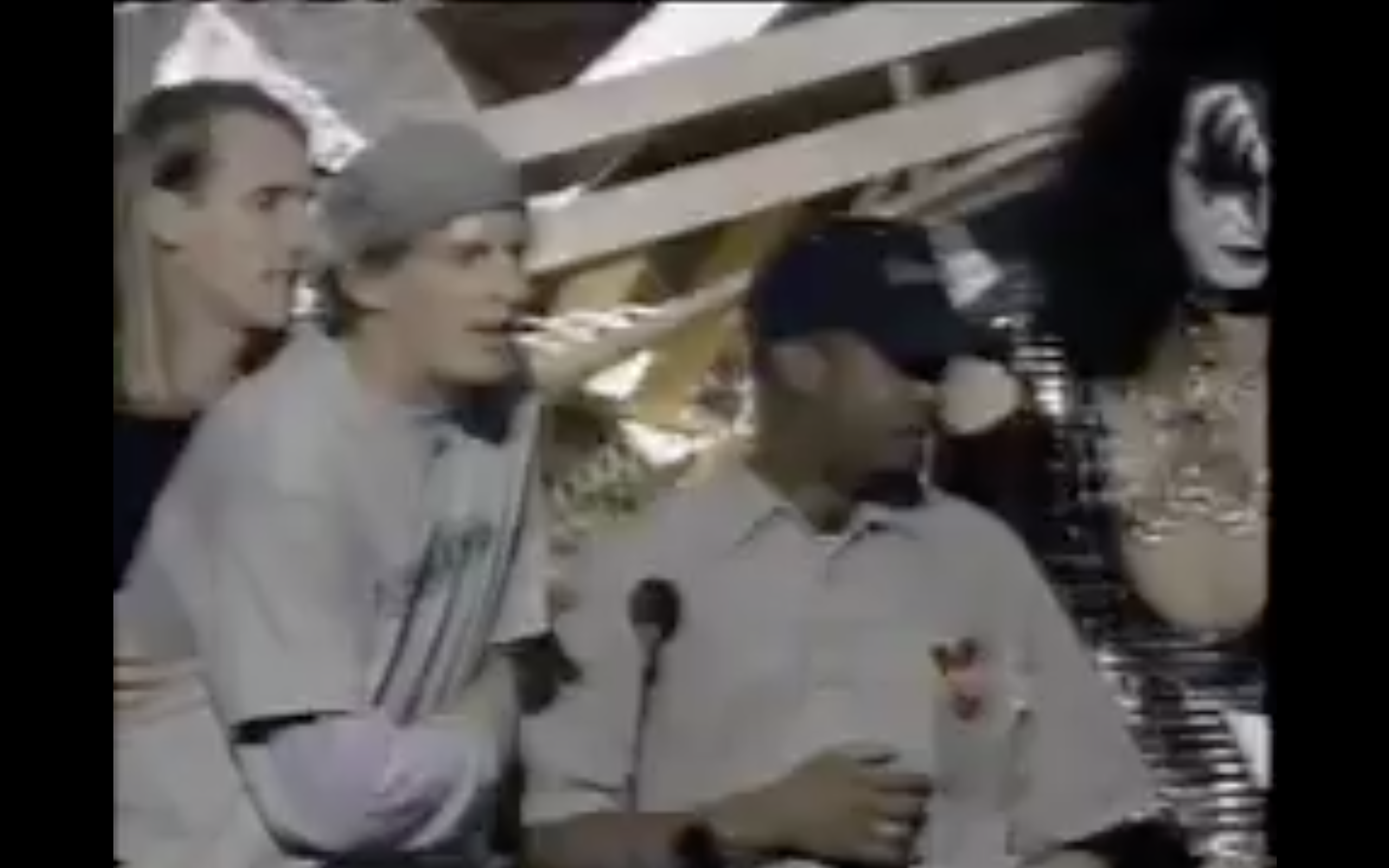
(I know his name is Darius Rucker and I don’t care. I haven’t forgiven him for stealing a beloved song from my state, beautiful North Carolina anthem “Wagon Wheel,” when he’s from South Carolina. He couldn’t even possibly “head down south to the land of the pines.” He’d have to head north. Old Crow Medicine Show didn’t busk on the streets of Boone and rework a Bob Dylan demo as TEENAGERS for this disrespect.)
Why did Hootie and his Blowfish look like that?? The video for the band’s highest-charting single features them playing golf and jamming out dressed like absolute dads. They look like parodies of dads. Unironic dad fits. I hate it.
We really don’t let bands look like shit anymore. We’re past that as a society. There’s not a single person on this earth who could identify a member of the band Imagine Dragons, for instance, probably not even their own family members, and yet they still dress like this to accept an award:
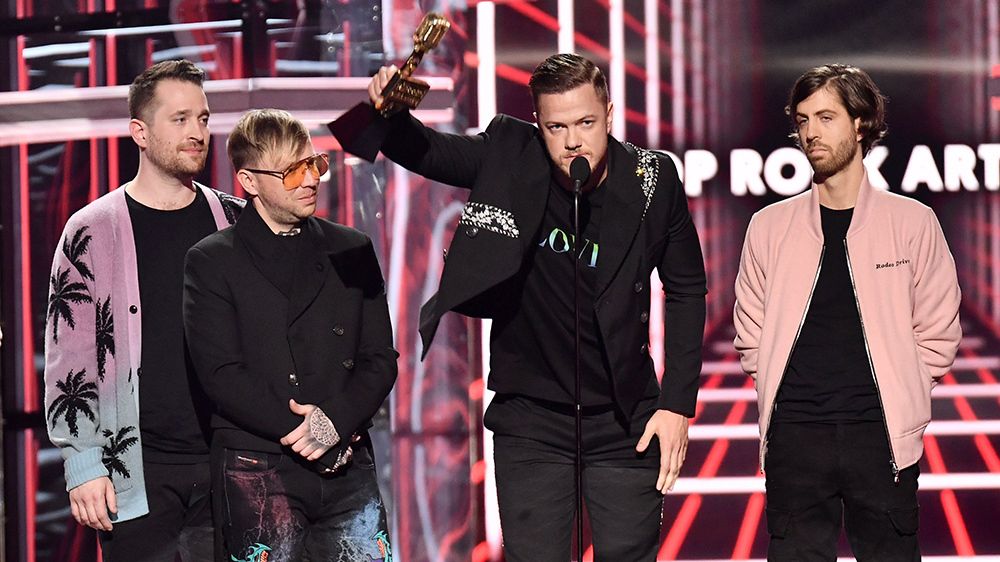
I’m not saying this is good, but it’s coordinated. Our celebrities did not make such an effort in the mid-90s! I did take a fashion history class in college and I did spend over an hour parsing this dilemma for no reason today, so allow me to try to explain why this happened.
As any historian or mathematician will tell you, the 90s came after the 80s. And the 80s were a big neon coke-fueled mess. The peace & love youth culture of the late 60s had curdled with the Vietnam War, and the “Moral Majority” was ready to take power back. Enter Reagan with a War on Drugs to decimate the black community and a refusal to help stop the AIDS epidemic decimating the gay community. That hippie bullshit was over, in other words, and the wealthy assholes enjoying this new decade dressed to signal their success.
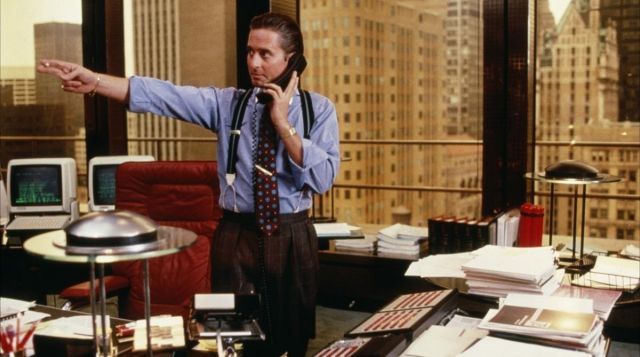
Fashion is cyclical, and the power-suited 80s threw back to the intimidating silhouettes of the 40s. A similar backlash had happened the first time around: after a fun and frivolous youth culture bubbled up in the Roaring 20s, a depression hit to cool the party down, and by the 40s it was more appropriate to dress like grown-ups. There was a war to worry about. Shoulders were big and padded, with waistlines raising up to emphasize the shoulders further. It was a more intimidating silhouette, and it matched the “greed is good” era too.
Meanwhile, music got drenched in synths, perms got teased with hairspray, and rockstars got smeared with makeup. It was a very artificial decade. So much so that by the 90s, the target audience for pop culture — young white people enjoying the ongoing economic prosperity but bored with Starbucks and La-Z-Boy and other comforts of the suburbs — wanted something that felt real. So hair got stringier, makeup more subtle. It wasn’t cool to look like you tried. College kids rummaged around thrift stores to find stuff from the 70s, a more authentic decade.
I’m generalizing, of course, because there’s all kinds of countercultures to consider in any decade. (Well, any decade since clothing became mass-produced, cheaper to buy, and more of a means of self-expression. Prior to that, differences in clothing would be mainly linked to social class.) But that’s the general trajectory. Now to look specifically at one particular style: Bros Who Look Like Dads.
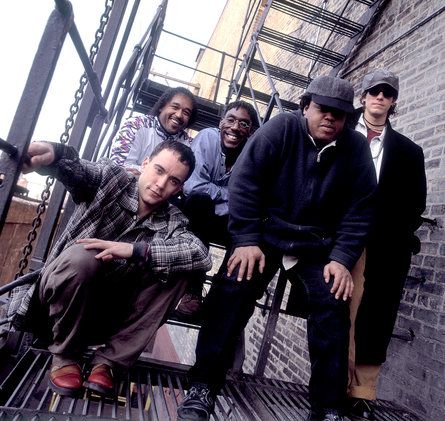
As Todd pointed out in his video, Hootie & the Blowfish functioned as a watered-down R.E.M, a band that had a coolness factor because of its association with college radio. Hootie took the appeal of R.E.M. (college rock, intellectual, chill) and made it more palatable (dumber lyrics, poppier hooks, more upbeat vibes). Like their contemporaries the Dave Matthews Band, the band appealed more to frat dudes than the alternative kids on campus.
In the 80s, college style meant preppiness. In the early 90s, it was grunge. In the middle of that Venn diagram you get looks like this:
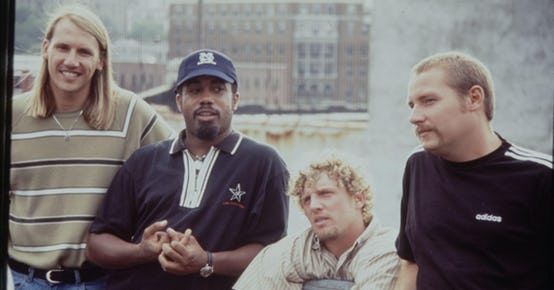
Hideous.
But that was fine, the general public said! Chill dudes making chill music didn’t need to be fashionable. They weren’t trying too hard. But when did that change?
Shit would get shiny and synthetic again as Y2K approached, the grungy angst of Nirvana replaced with the bubblegum of boy bands and Britney. The early aughts saw the worst fashion of all time, and I can’t even explain that. (I don’t want to blame it all on 9/11, but it certainly didn’t help.) And then came blogs, the influence of which cannot be overstated. Suddenly anyone, anywhere could opine about celebrity style to thousands of readers. By 2007 or so, the Internet had proliferated so thoroughly that there was a demand for more content, and that meant as many photos of stars as possible. (If you think I’m being hyperbolic, consider that Google Images was launched as a direct response to the Internet’s desire to see pictures of Jennifer Lopez in her infamous green Versace dress in 2000!)
And with the rise of the blogs came the rise of the stylist, professionals enlisted to make sure no one would show up to a Grammys party looking like this:
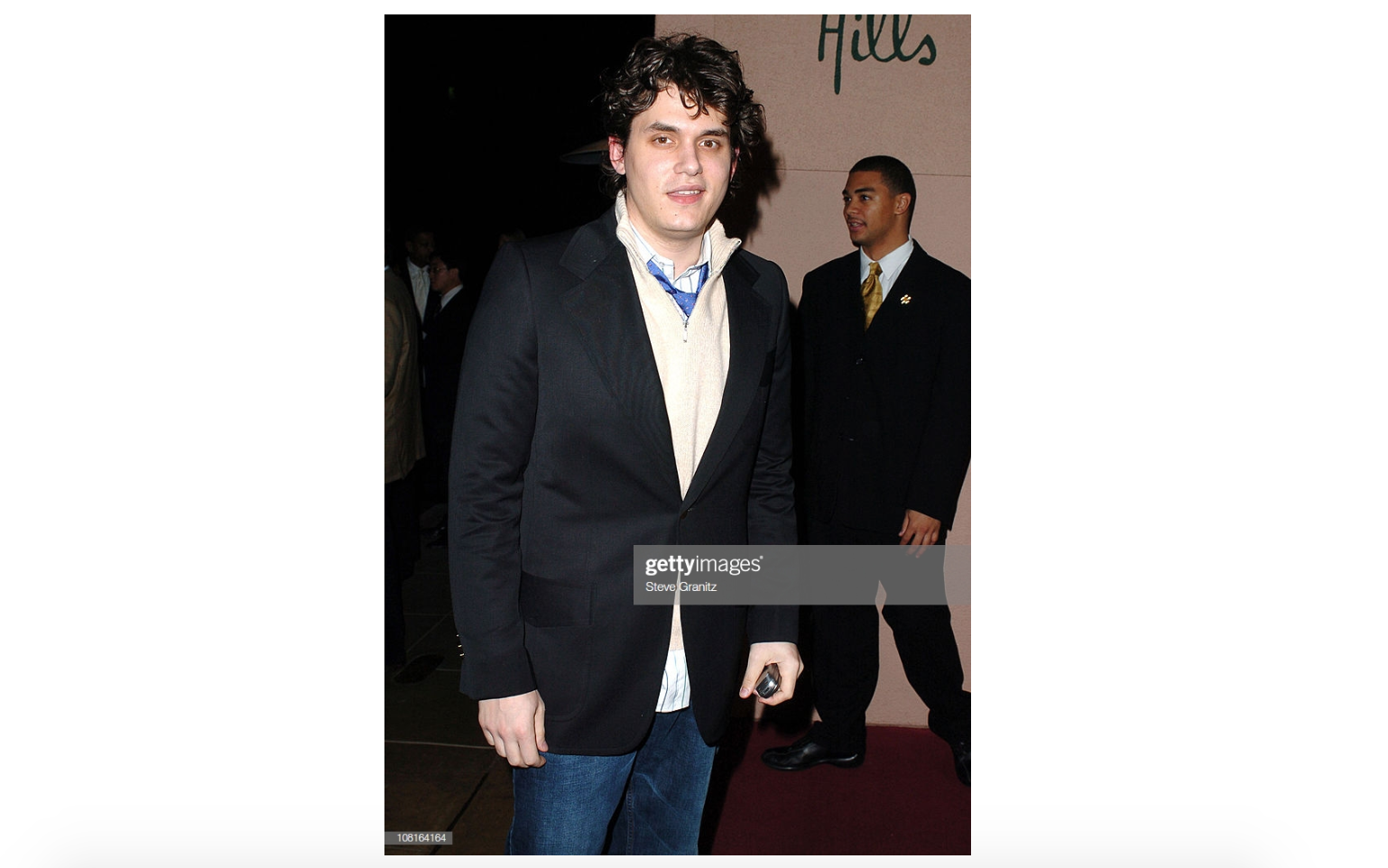
So now everyone looks, if not good, at least intentional. Celebrities look more polished in general, even when running errands, because the paparazzi might catch them or a passerby with a smartphone might blast their look to social media. Even our modern stars who look like garbage, such as ghoulish dirtbag Pete Davidson, still aren’t committing the fashion crimes of the Hootie gang: they don’t look like fucking squares. The internet, fashion blogs and Instagram accounts, and the resulting fashion startup boom has made the base level of style a lot higher. A boring but acceptable outfit nowadays might be a nice Everlane tee with well-fitting pants and a cardigan, a huge step up from a classic 90s look like a bowling shirt thrown over a graphic tee and baggy khakis. Even dads can have style, and the dads who don’t are still dressing like Hootie, wearing the looks they could sport in the 90s when expectations were lower for them.
Back then, a booming record industry threw money at any act with potential to see what could stick. Musicians appeared on TV in whatever clothes they felt like throwing on, shaking loose the expectations of the more style-conscious 80s, and the public rewarded them by spending all their extra cash on CDs. But now the record industry has collapsed, no one has any money, and we all have to try a little harder. And in the case of fashion, I think that’s actually a good thing.
